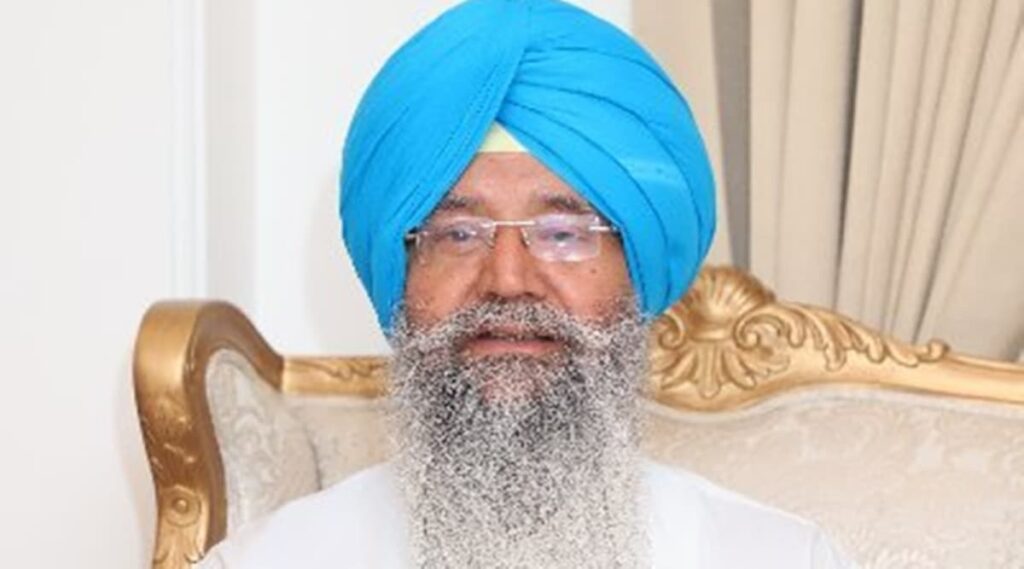Punjab has always been guided by the message of Guru Nanak Dev Ji: “Apna meet hum sab ko kina, hum sabna ke sajan”—we are all friends, relatives, and share a common DNA. He reminded the world: “Eko hai Bhai, Eko hai”—there is only One God, one humanity, one destiny. This spirit of unity is not only spiritual but also deeply political, for it has repeatedly inspired Punjabis to rise above divisions and act as one family.
In 1967, Punjab’s first non-Congress government under Justice Gurnam Singh came to power with support from the Akali Dal, Jan Sangh, Communists, other parties, and independents. To sustain this broad coalition, they adopted an Eleven-Point Programme.
That document was not an Akali programme, nor a Jan Sangh manifesto, nor a Communist agenda—it was a common Punjabi programme drafted and adopted with consensus to develop Punjab. Even today, nearly sixty years later, it offers Punjab a roadmap out of its current crises.
Punjab today faces economic slowdown, drug menace, large-scale migration, agricultural stagnation, political disillusionment, and a deepening trust deficit between communities. While leaders argue about identity politics, water disputes, or short-term electoral gains, the basic issues of governance, prosperity, and social harmony remain unattended. This is why returning to the spirit of the Eleven-Point Programme is not nostalgia—it is necessity.
The first point was Hindu–Sikh unity and communal harmony. This was the foremost need in 1967, and it remains the foremost need in 2025. Punjab’s stability depends on Hindu–Sikh trust, for they are not two separate peoples but one family. Every crisis of Punjab in the last century—from Partition violence to terrorism—was worsened when this unity cracked. Yet, deceitful conversions, identity-based mistrust, and divisive propaganda are once again eroding the social fabric. To honour Guru Nanak’s teaching of universal friendship, Punjab must actively rebuild this trust as the foundation of peace and progress. Without Hindu–Sikh amity, no programme of development can succeed.
The second point was the release of political prisoners and withdrawal of false cases. In 1967, the demand was justice for those booked under politically motivated charges. Today, the principle translates into ensuring impartial courts, fair trials, and speedy justice. Punjab’s youth, farmers, and minorities all need assurance that the law is not an instrument of revenge. If people lose faith in the fairness of law, discontent festers, and agitation becomes the only outlet. Rule of law, applied equally, is the strongest guarantee of peace.
The third was the promotion of Punjabi language and culture. The 1967 programme called for Punjabi to flourish as a language of governance, literature, and education. Sadly, Punjabi still struggles in schools and administration, while English and Hindi dominate. If Israel could revive Hebrew, and Ireland could protect Gaelic, why should Punjabi decline in its own land? Our writers, singers, diaspora, and educators must unite for cultural revival. It cannot be left only to government—it must become a people’s movement. Punjabi is not just a language, it is the heartbeat of Punjab’s identity.
The fourth point was strengthening agriculture. Punjab’s farmers once fed the nation, but today they are trapped in debt and monoculture. In 1967, the focus was irrigation, cheap credit, and fair prices. Today, the vision must expand to diversification, food processing, water conservation, and global market linkages. Without modernisation, Punjab’s economy will collapse further. Farmers must be supported to move from wheat–paddy cycles to fruits, vegetables, organic farming, and agri-business ventures. The green revolution must be followed by a second revolution of sustainability.
The fifth was employment for youth. In 1967, educated unemployed youth were a concern. In 2025, the crisis is alarming. Migration has become compulsion rather than choice. Lakhs of young Punjabis leave every year, draining both talent and money. Punjab must invest in skills, IT hubs, green technologies, and entrepreneurship. Only when youth find dignified livelihoods at home will the drug menace decline. No society can prosper if its brightest children seek a future only outside its borders.
The sixth was industrialisation. The 1967 coalition wanted agro-based industries to absorb rural labour. Today, Amritsar, Jalandhar, and Ludhiana’s industry is struggling. Small-scale units are closing, investments are stagnant, and red tape chokes entrepreneurship. Punjab must offer infrastructure, electricity, connectivity, and ease of doing business. If the state becomes an innovation hub, not just a land of remittances, it can regain pride. Without industry, agriculture alone cannot sustain Punjab.
The seventh was eradication of corruption. In 1967, it was rising; in 2025, it is an epidemic. Allegations extend right up to the Chief Minister’s office, senior officers, and contractors, while the small employee is scapegoated. Unless accountability begins at the top, the system cannot be cleansed. Transparency, strong vigilance, and public participation are the only answers. Corruption not only drains money but destroys faith in governance.
The eighth was revival of cooperatives. In the 1960s, cooperatives empowered farmers, women, and weaker sections. Today, cooperative banks, dairies, and mills are collapsing. Reviving them can give rural Punjab both economic strength and community solidarity. Cooperatives are not just financial units—they are schools of democracy, where trust and self-help grow.
The ninth was reforms in local self-government. Panchayats and municipalities were to be empowered in 1967. Today, power is still over-centralised. If local bodies are strengthened, villages can manage water, waste, schools, and health centres better than distant bureaucrats. True democracy means power in the hands of people, not only in the secretariat.
The tenth was education. In 1967, the United Front wanted more schools and colleges, especially in rural areas. Six decades later, Punjab faces declining standards, drug abuse among students, and a rush for foreign education. What is worse, education is no longer seen as a government service but as a private business. This erodes equality and leaves rural and poor families behind. Punjab needs quality public schools and universities where every child, rich or poor, has equal chance to succeed.
The eleventh was protection of democratic rights. Freedom of press, assembly, and association were central in 1967. Today, these freedoms must be safeguarded from both state pressure and extremist threats. Democracy grows only when people feel safe to speak and organise peacefully. Punjab must never again allow an atmosphere where free voices are silenced—whether by state power or militant intimidation.
When we read these eleven points today, they do not sound outdated but prophetic. Yet Punjab’s politics took another direction. Why did Congress not allow Justice Gurnam Singh’s Ministry to complete its term? How did Naxalism reach Punjab? Why could Punjabi not be taught in every school? In 1973, the Anandpur Sahib Resolution shifted focus to identity and autonomy, sidelining the broad social programme. The result was decades of unrest and lost opportunities. Almost all the signatories and the visionaries of 1967 have left this world, but their wisdom remains.
Now, when Punjab faces a triple crisis of economy, society, and politics, it is time to return to the spirit of 1967. A new people’s programme is needed, updated with present concerns—drug menace, environmental degradation, migration, and loss of trust in institutions. The recent decrease in the number of Punjabi officers due to new government policies is another warning sign. A state whose very identity rests on being the homeland of Sikhs and the culture inspired by Jagat Guru Nanak cannot afford to see Punjabi representation in services diluted. This will hurt both Punjab and India.
Let Guru Nanak’s universal message be our guide: we are all one family, sharing common DNA. Blaming others has never been the Gurmat way. Dialogue, self-reflection, and collective effort are the true path forward. Punjab must rediscover its unity and courage, for the sake of future generations. Let all Punjabis across the world adopt an updated Eleven-Point Programme and make Punjab a peaceful, progressive, and prosperous state once again.
–This article has been contributed by S. Iqbal Singh Lalpura.


